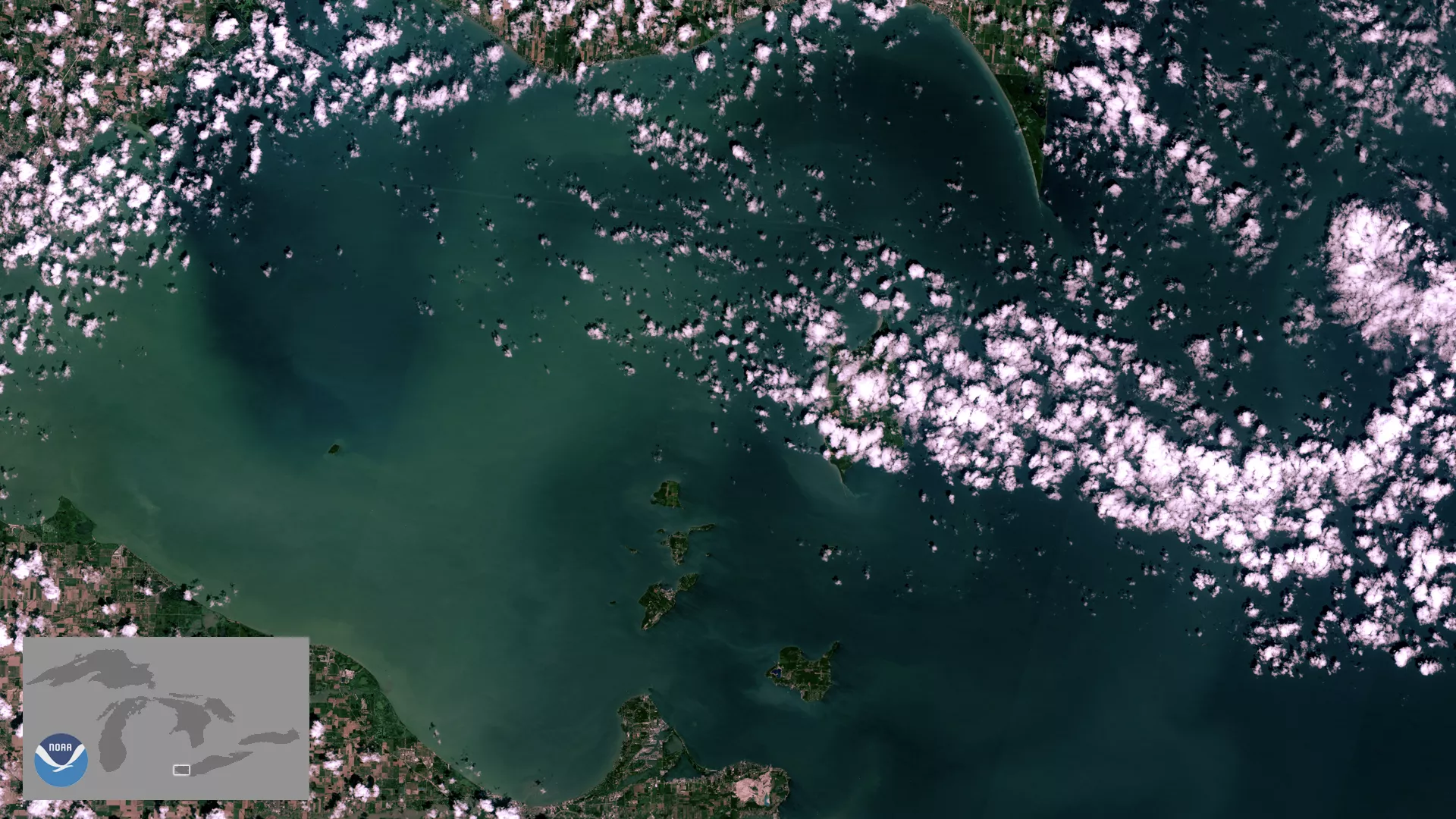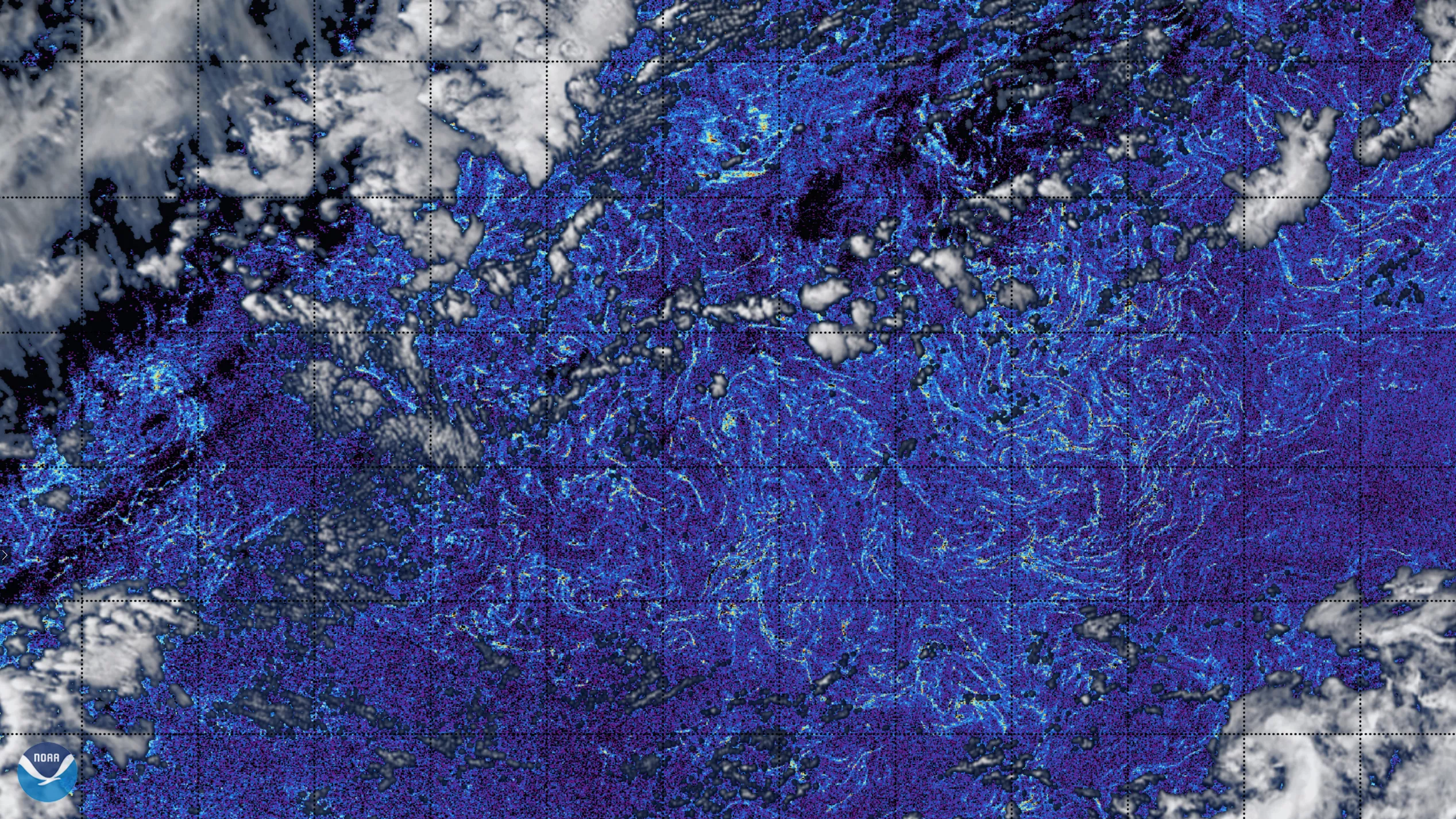Harmful algal blooms (HABs) occur when algae or cyanobacteria in water rapidly grow and produce toxins that may harm people, animals, or the local ecology. HABs may look like foam, scum, or mats on the surface of bodies of water and can change the color of the water to green, blue, brown, red, or other colors.
HABs can grow in fresh, salt, and brackish (a mixture of fresh and salt) waters around the world. They also tend to form in warm water with high levels of nutrients such as nitrogen and phosphorus, which often accumulate in runoff from farms. Additionally, some invasive species, such as the zebra or quagga mussels in Lake Erie, have been shown to help contribute to the growth of HABs because they filter or consume the harmless green algae already present rather than the cyanobacteria, which then multiply.
The use of satellites to track harmful algal blooms goes back to the fall of 1987, when scientists used NOAA satellite data to track a bloom of Karenia brevis—the algal species responsible for “Florida red tide”—off the coast of North Carolina.
More Articles on Oceans and Coasts
-
Ten years ago today, a 9.1 magnitude earthquake struck off the northeastern coast of Honshu on the…
-
March 08, 2021 NOAA CoastWatch Atlantic OceanViewer, on March 3, 2021, captured imagery of massive…
-
Early on November 2, 2020, the GOES-East satellite watched Tropical Storm Eta strengthen into a…


